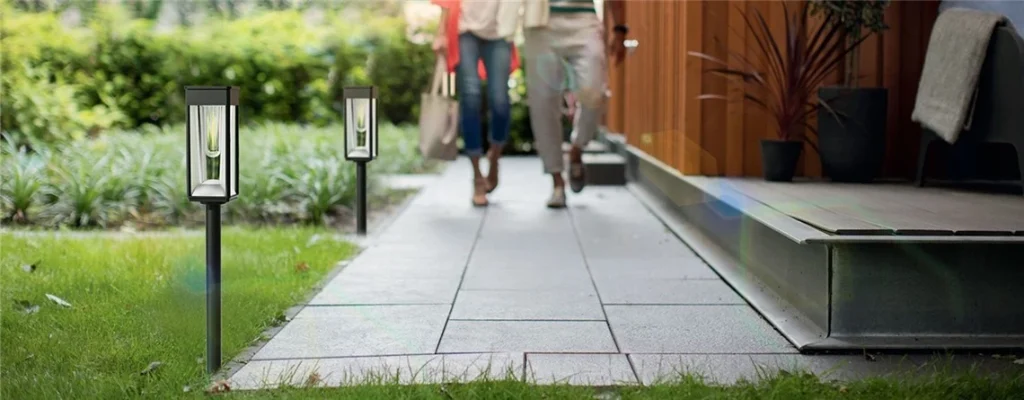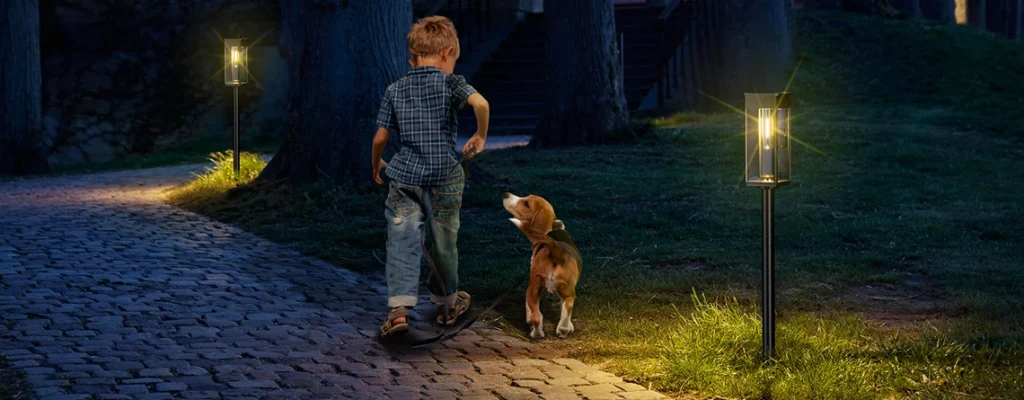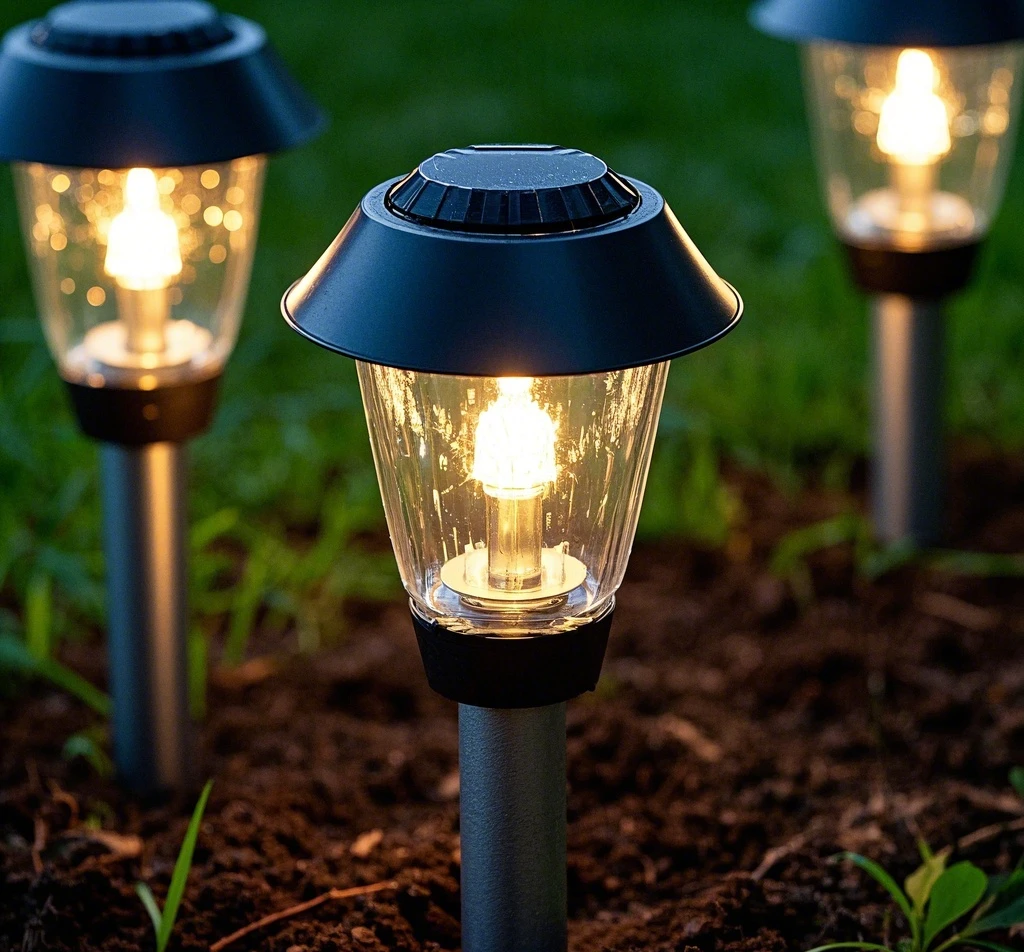If you’re one of the millions of American homeowners with a sprawling lawn, you know nighttime yard work—watering, trimming, or raking leaves—can be a hassle. Poor lighting means you’re guessing where the sprinkler’s aimed or accidentally butchering your prized roses with the hedge trimmer. I’ve been there, fumbling with a clunky flashlight that dies halfway through leaf cleanup. Traditional handheld lights are a pain: short battery life, awkward to carry, and they never shine where you need them. Solar lights, though, can change the game. With the right setup, they make nighttime lawn care efficient, protect your grass, and save you from tripping over the garden hose. Here’s how to use solar lights to keep your lawn looking sharp, even after dark.

Scene-by-Scene Lighting: Tailoring Solar Lights to Your Lawn
Every part of your lawn has different needs when the sun goes down. Watering the edges, trimming around flowers, or clearing leaves in the middle—each task begs for its own lighting fix. Solar lights come in versatile styles that can be placed strategically to make these jobs easier and keep your lawn pristine.
Here’s a breakdown of how to light up your yard for maintenance:
- Pathway Lights for Edges: Line the lawn’s borders with short, stake-style solar lights. These light up irrigation lines or garden hoses, so you don’t step on the grass while watering. I use 12-inch Bitpott stakes along my lawn’s edge, and they’ve saved me from mangling the turf during late-night sprinkler checks.
- Spotlights for Flower and Shrub Zones: Install solar spotlights with a narrow beam setting near flowerbeds or bushes. The focused light highlights plants, so you don’t accidentally clip your tulips while trimming hedges. Adjustable beams are a lifesaver for precision.
- Portable Lanterns for the Middle: Grab a small solar light with a handle for the lawn’s center. These are perfect for leaf cleanup—you can move them to spotlight piles without dragging cords. I carry one around when raking, and it beats juggling a flashlight.
This setup keeps every corner of your lawn visible, so you’re not guessing where to water or trim in the dark.
Features That Match Lawn Care Needs
Not all solar lights are cut out for the rough-and-tumble of lawn maintenance. Watering systems splash, mowers roll over things, and you need lights that can take a beating while syncing with your routine. Picking the right features makes all the difference.
Here’s what to look for in lawn-friendly solar lights:
- IP68 Waterproofing: Lawns get wet—sprinklers, rain, you name it. IP68-rated solar lights can handle being splashed or even soaked without shorting out. I’ve got a set near my sprinkler heads, and they’ve survived months of daily dousing.
- Timer Functions: Look for solar lights with timers that sync with your irrigation system, like kicking on at 4 a.m. for early watering. No need to flip switches or remember to turn them off. My Bitpott lanterns sync perfectly with my sprinkler schedule, saving me a trip outside in pajamas.
- Crush-Resistant Panels: Lawn mowers and clumsy feet are real threats. Choose solar lights with tough, anti-crush photovoltaic panels to avoid cracking them during maintenance. I’ve stepped on mine more than once, and they’re still ticking.
These features mean your lights work with your lawn care routine, not against it, and they’ll last through seasons of heavy use.
Why Solar Beats Traditional for Lawn Work
Let’s be real—handheld flashlights or wired lights just don’t cut it for nighttime lawn care. Flashlights die mid-task, and extension cords are a tripping hazard. Solar lights, on the other hand, charge for free during the day and shine reliably at night. They’re also low-maintenance—no bulbs to swap or wires to untangle. I switched to solar lights after one too many evenings wrestling with a dying headlamp while trying to fix a sprinkler. The difference? Night and day.

For specific tasks, solar lights shine:
- Watering Precision: Pathway lights show exactly where your irrigation lines run, so you don’t flood the wrong spot or crush grass.
- Trimming Safety: Spotlights keep your clippers away from delicate plants, saving your flowerbeds from accidental carnage.
- Leaf Cleanup Ease: Portable solar lanterns let you focus light where you’re working, making it easier to spot every last leaf pile.
Plus, they’re eco-friendly, sipping sunlight instead of guzzling electricity, which feels good when you’re already tending a green lawn.
Real Yards, Real Results: Solar Lights in Action
Don’t just take my word for it—homeowners across the U.S. are using solar lights to make lawn care smoother. A Texas gardener shared on a forum how they lined their lawn with short solar stakes to guide nighttime watering, cutting down on over-soaked patches. In Michigan, another user swore by solar spotlights to protect their rose bushes during hedge trimming, saying the narrow beams saved their plants from “mower mishaps.” I’ve got a buddy in Ohio who uses portable solar lanterns for fall leaf cleanup, moving them around to light up every corner without dragging cords through the grass.
These setups work because they’re practical:
- Edge Lighting: Stops you from trampling grass while adjusting sprinklers.
- Focused Beams: Protects flowers and shrubs from stray clippers.
- Portable Glow: Makes leaf raking or debris cleanup a breeze, no cords needed.
These stories show how solar lights turn nighttime chores into no-sweat tasks, keeping lawns pristine.
Placement Tips for Maximum Impact
Where you put your solar lights matters as much as which ones you pick. A bad setup can leave you squinting or, worse, damaging your lawn. I learned this when I first stuck some lights too close to my sprinkler heads—they got soaked and flickered out. Now, I’m strategic, and my yard’s better for it.
Try these placement hacks:
- Edge Lights: Space pathway lights 3-5 feet apart along lawn borders to clearly mark irrigation paths.
- Spotlights: Angle them 30-45° toward flowerbeds or shrubs for precise lighting without glare.
- Portable Lights: Keep them near central lawn areas but move them as needed for tasks like raking or weeding.
- Sun Exposure: Ensure panels get at least 6 hours of direct sun daily—avoid shady spots under trees.
These tweaks keep your solar lights shining where you need them, making every task easier and safer for your lawn.
The Bigger Picture: Why This Matters
Using solar lights for lawn care isn’t just about convenience—it’s about protecting your investment. A well-maintained lawn boosts curb appeal and property value, but nighttime mistakes like overwatering or mis-trimming can undo months of work. Solar lights let you see what you’re doing, so you’re not guessing where the sprinkler’s hitting or accidentally scalping your grass. They also cut your energy bill to zero and reduce your carbon footprint, which feels like a win when you’re already nurturing a green space.
For American homeowners, lawns are a point of pride. Solar lights make it easier to keep them looking great, even when you’re working under the stars. My backyard used to be a guessing game at night—now, with a few well-placed Bitpott lights, I water, trim, and clean up with confidence, and my lawn’s never looked better.
Lawn Care Made Simple: The Solar Solution
Solar lights are a game-changer for nighttime lawn maintenance. By lining edges with pathway stakes, spotlighting flowerbeds, and using portable lanterns for cleanup, you can water, trim, and rake without wrecking your grass. Pick lights with IP68 waterproofing, timers, and tough panels to handle the mess and stress of lawn care. It’s not just about lighting—it’s about making every task precise and painless, so your lawn stays lush and your evenings stay easy. With the right solar lights, your yard will thank you, and you’ll wonder how you ever managed without them.


Leave a Reply